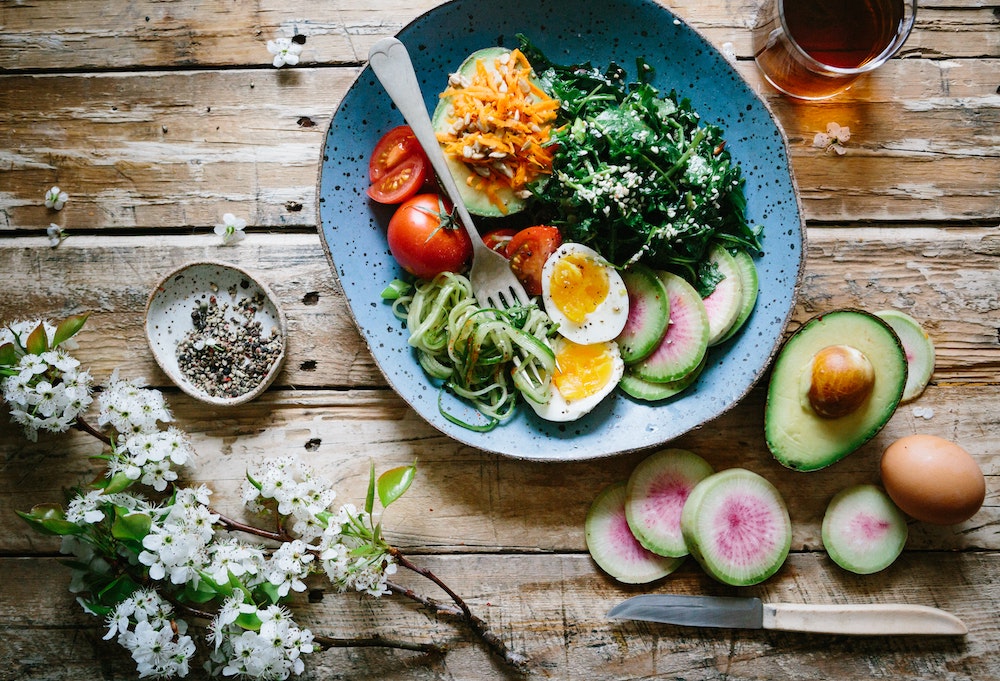For anyone who is following my Instagram account – it is no secret that I am a big fan of green smoothies. To be honest, it took me a little while to make the leap over from a regular fruity smoothie to the world of green. I used to happily drink my greens in juice form but just hadn’t really tried a good green smoothie. Smoothies and juices can both be healthy in moderation and I am going to discuss the difference between the two and hopefully convince you that a green smoothie is at least worth a try!
The main difference between smoothies and juices is that the juicing process extracts water, vitamins and minerals from the fruit or vegetables being juiced, leaving the pulp or fibre behind. Smoothies on the other hand, contain the whole fruit or vegetable – whatever you put in your blender is contained within the end product.
Juicing, especially if the juice contains mostly vegetables and leafy greens, can be a great nutrient boost and can certainly help to deliver essential vitamins and minerals in an easily absorbed form. I often recommend vegetable-based juices (as a juice or frozen as popsicles) for small children who may not otherwise be eating many (or any!) raw vegetables. This can give them a variety of vitamins and minerals they may not otherwise be getting in their diet.
For these children, I usually recommend following the juice with a good quality fat and protein-containing snack to balance their blood sugar levels. Snacks may include: natural yoghurt with chia seeds, a piece of cheese, nut butter or hummus on a rice thin, a boiled egg or some slices of cooked chicken.
The problem with juicing is that large amounts of fructose-containing fruit and vegetables are needed to make a cup of juice – much more than most people would consume in a meal. Without the fibre to slow it down, the fructose is rapidly absorbed which disrupts blood sugar levels and can lead to fatigue and over-eating in the hours following (hence the accompanying snack suggestions above).
The great thing about smoothies is that they contain everything you put in them, fibre and all. They are nutrient dense and when you start adding vegetables and leafy greens, they are an easy and tasty way to seriously boost your daily vegetable intake. I like to lay all the ingredients on the bench before blending so that I can be sure that what I am about to consume is an appropriate amount of food. Be careful that you don’t overconsume smoothies (or any food) as they can be quite energy dense.
I usually recommend starting out with fruity smoothies that you enjoy the taste of and then slowly add vegetables and superfoods while reducing the amount of fruit. As with any meal or snack, you should be looking for your smoothie to contain three key ingredients: a source of protein (nuts, seeds, tahini, yoghurt, bone broth); a source of good fats (avocado, nuts, seeds, coconut oil) and vegetables (leafy greens, celery, cucumber, carrot, mint etc).
These ingredients usually require a liquid to be added such as milk, nut milk, coconut water, coconut milk or most often, filtered water. As you become more advanced in your smoothie making you can start playing with superfoods such as bee pollen, hemp seeds, gelatin, spirulina, maca, mesquite, acai and chlorella to name a few!
Green smoothies are popular for their health-boosting qualities. Adding leafy greens is a great way to alkalise and detoxify your system. They provide an easily absorbed form of essential folate and calcium, keep energy levels high and blood sugar levels low. Green smoothies are a brilliant way to start the day and help provide an easy breakfast option that doesn’t include wheat, grains, added sugars or excess dairy. I love to make extra and keep the remainder in a screw top jar and enjoy as a snack for afternoon tea. Simply keep in the fridge and shake up before drinking.
My two girls and indeed the many toddlers and children of my clients love and look forward to their green smoothies. The trick is to start early or add the new foods slowly and in small amounts. My girls particularly enjoy the mint-containing smoothies – I think in their minds, the dark green colour is just the delicious minty flavour! I truly believe that the secret ingredient of green smoothies is frozen mango – for some reason it makes the whole thing ALWAYS taste good (a little frozen banana also helps for beginners).
The favourite easy green smoothie loved by my kids would have to be frozen mango, frozen banana, avocado, celery, baby spinach, chia seeds, mint and coconut water. Even at 9 and 11 years, they probably have no idea that avocado or celery is in the smoothie and I send them off to school knowing that they have already had four different green vegetables before 8am!
I’d love to see and hear of your experiences – tag me @bknaturopathy and hashtag #bkgreensmoothie to share on instagram!







